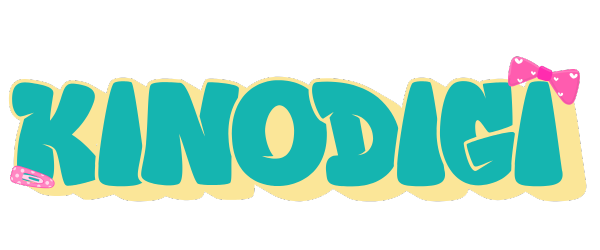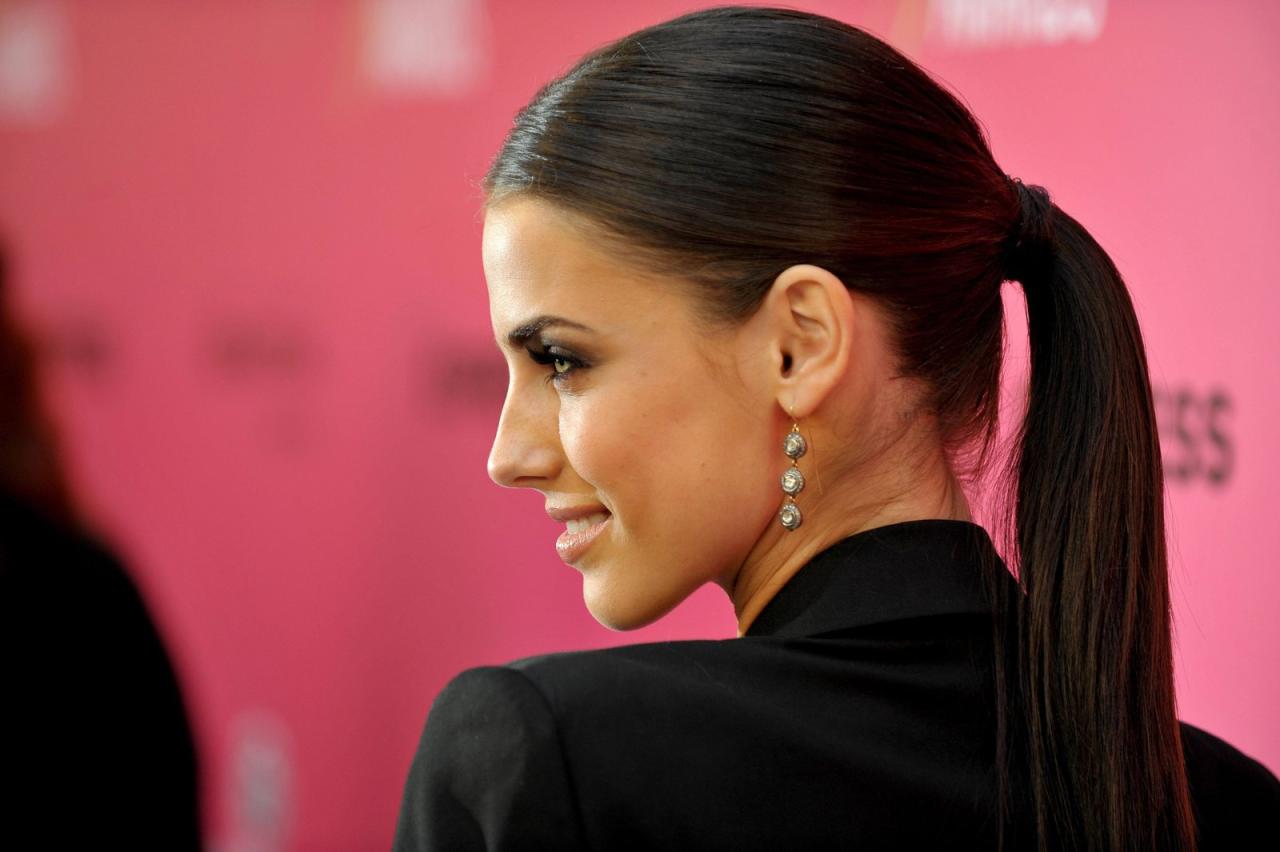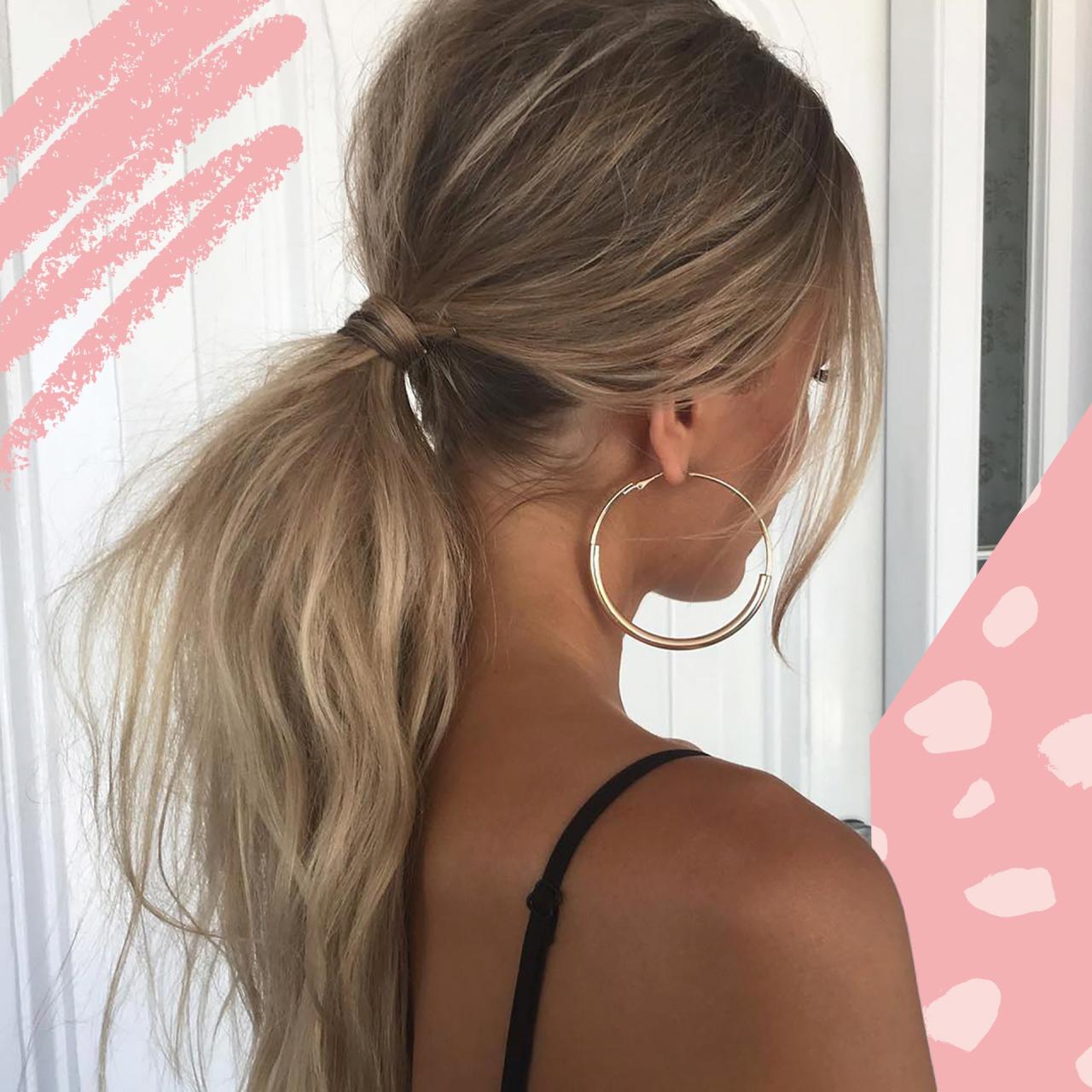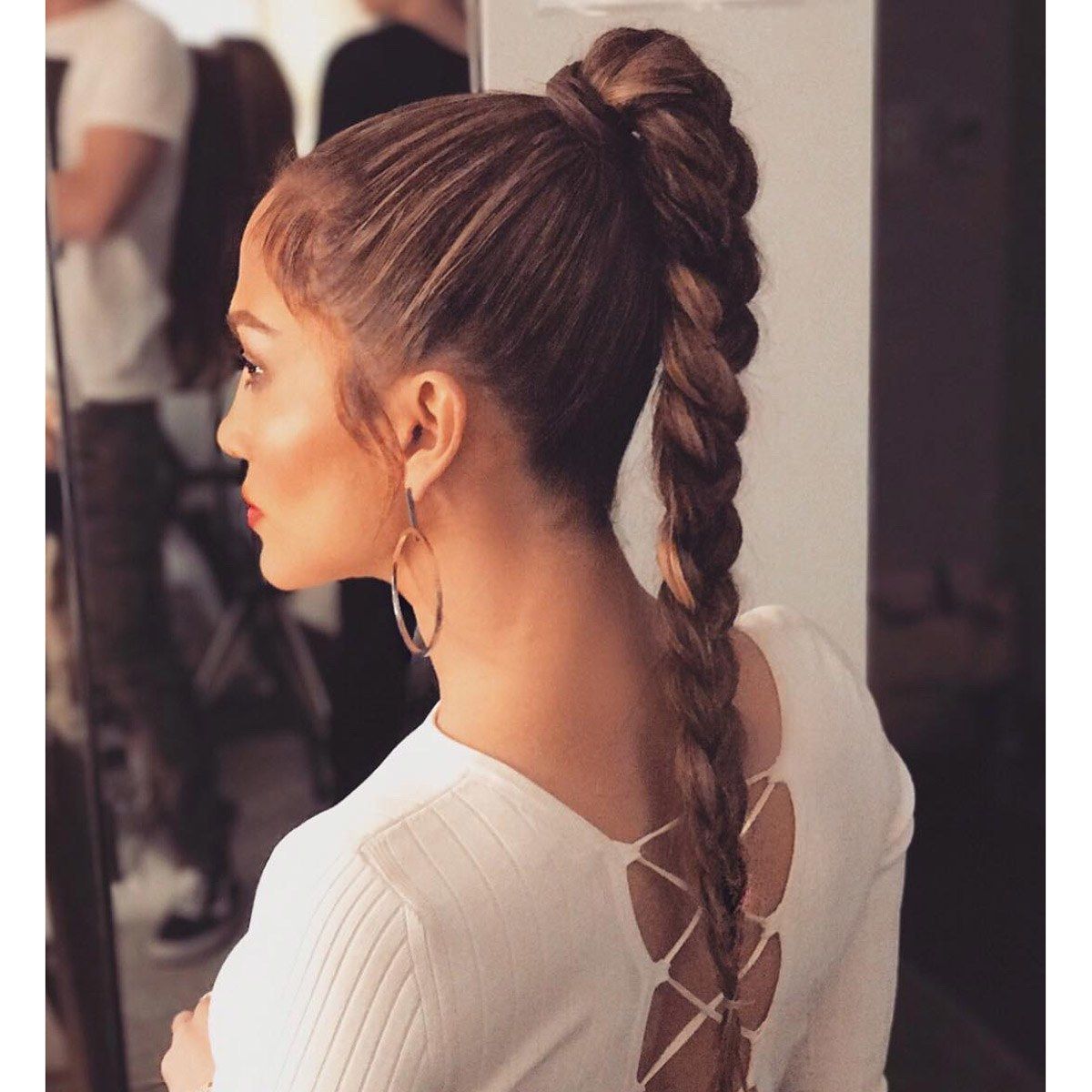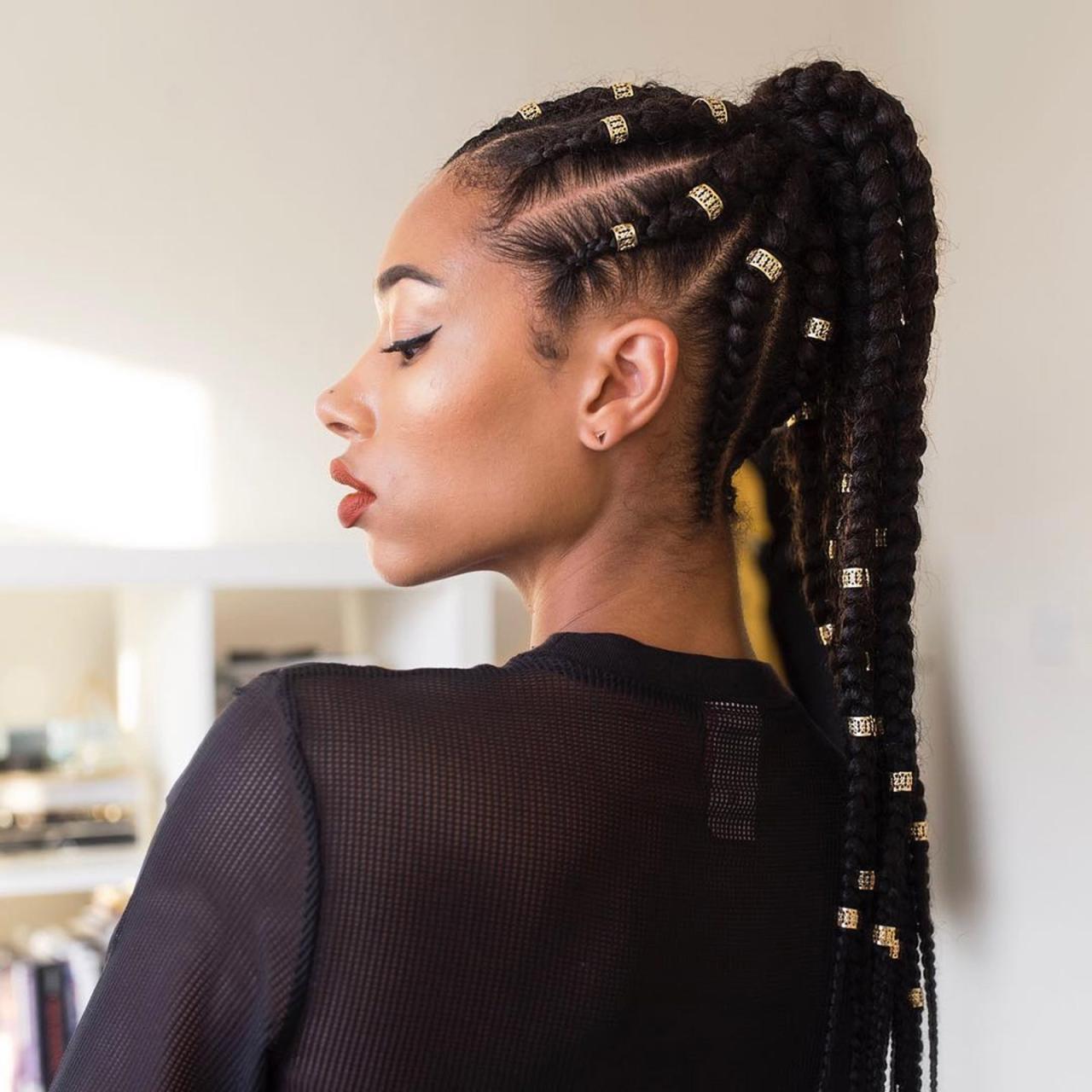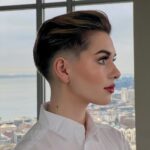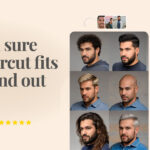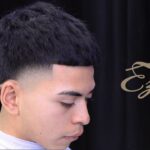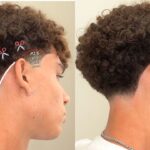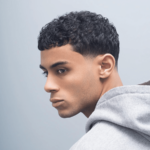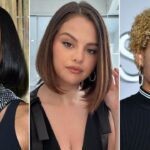Pony tail hair style – Ponytail hairstyles, with their timeless elegance and versatility, have captivated hearts and graced heads for generations. From sleek and sophisticated to playful and whimsical, ponytails offer a myriad of options to suit every taste and occasion.
The allure of ponytails lies in their ability to elevate any look, whether it’s a casual day out or a formal evening affair. They can be styled high or low, sleek or voluminous, and adorned with accessories to create a unique and eye-catching statement.
Popularity and Trend Analysis
Ponytail hairstyles have consistently ranked among the most popular hairstyles worldwide, particularly for women and girls. The style’s versatility, ease of styling, and suitability for various hair types contribute to its enduring popularity.
The trendiness of ponytail hairstyles fluctuates over time, influenced by fashion trends, celebrity endorsements, and cultural shifts. In recent years, ponytail hairstyles have experienced a resurgence in popularity, with variations such as the high ponytail, low ponytail, and braided ponytail gaining traction.
Pony tail hairstyles are timeless and versatile, suitable for various occasions. Whether you’re aiming for a sleek and polished look or a more casual and carefree vibe, a pony tail can effortlessly elevate your style. To achieve a salon-quality blow-out at home, consider investing in a shark speed style hair dryer.
Its advanced technology ensures fast drying time while minimizing damage, making it ideal for creating voluminous and frizz-free pony tails that will turn heads.
Celebrities and Influencers
Celebrities and influencers have played a significant role in popularizing ponytail hairstyles. Icons like Ariana Grande, Beyoncé, and Kim Kardashian have frequently showcased ponytail hairstyles on red carpets, social media, and in music videos, inspiring millions of fans to adopt the style.
Variations and Styles
Ponytails are versatile hairstyles that can be adapted to suit various face shapes, hair textures, and personal preferences. From sleek and sophisticated to playful and bohemian, there’s a ponytail style for every occasion.
Ponytails can be classified into several categories based on their height, position, and styling techniques.
Height
- High Ponytail: Positioned at the crown of the head, high ponytails create an elongated silhouette and add height to the face.
- Mid Ponytail: Sitting between the crown and nape of the neck, mid ponytails offer a balance between height and versatility.
- Low Ponytail: Worn low on the nape of the neck, low ponytails exude a relaxed and elegant vibe.
Position
- Center Ponytail: Positioned directly at the back of the head, center ponytails are classic and timeless.
- Side Ponytail: Worn to one side of the head, side ponytails add an asymmetrical touch and can flatter various face shapes.
Styling
- Sleek Ponytail: Created by brushing the hair smooth and securing it tightly, sleek ponytails are polished and professional.
- Voluminous Ponytail: Backcombing or teasing the hair before securing it creates a voluminous ponytail with added height and drama.
- Braided Ponytail: Incorporating braids into a ponytail adds texture and interest. From fishtail to French braids, the possibilities are endless.
- Messy Ponytail: Intentionally disheveled, messy ponytails exude a carefree and effortless vibe.
Creative and Unique Ponytail Hairstyles
Beyond the basic variations, ponytails can be transformed into unique and eye-catching hairstyles. Some creative ideas include:
- Double Ponytails: Two ponytails positioned one above the other create a playful and youthful look.
- Bubble Ponytail: Sections of the ponytail are tied with hair ties to create a series of “bubbles” along its length.
- Half-Up Ponytail: The top half of the hair is pulled up into a ponytail, while the bottom half remains loose.
- Accessorized Ponytail: Ponytails can be adorned with ribbons, bows, headbands, or hair jewelry for a touch of glamour or whimsy.
Hair Types and Textures
Ponytail hairstyles can flatter all hair types and textures, but the appearance and styling techniques may vary depending on the individual’s hair characteristics. Understanding the different hair types and textures is essential for achieving optimal results and maintaining a ponytail that complements the wearer’s natural hair.
Hair types are generally classified into four main categories: straight, wavy, curly, and coily. Each type has unique characteristics that influence the way it responds to styling products and techniques.
Straight Hair
Straight hair is characterized by its smooth, sleek texture and lack of natural curl or wave. It is typically easy to style and can hold a ponytail securely without the need for excessive products or techniques. However, straight hair can also be prone to oiliness, so regular washing and use of clarifying shampoos may be necessary to prevent the ponytail from looking limp or greasy.
Wavy Hair
Wavy hair has a slight natural curl or wave pattern that can range from loose and subtle to more defined and bouncy. Wavy hair can be more challenging to style than straight hair, but it can also add volume and movement to a ponytail. To achieve a smooth, sleek ponytail on wavy hair, it is important to use a detangling spray or serum to minimize frizz and prevent tangles. Styling products such as mousse or hairspray can also help to define the waves and hold the ponytail in place.
Curly Hair
Curly hair is characterized by its tightly coiled texture that can range from loose and bouncy to kinky and tightly coiled. Curly hair can be more difficult to style than straight or wavy hair, but it can also create a voluminous and dramatic ponytail. To style a ponytail on curly hair, it is important to use products that are specifically designed for curly hair, such as curl creams or leave-in conditioners. These products can help to define the curls and prevent frizz. It is also important to avoid over-brushing curly hair, as this can cause breakage and damage.
Coily Hair
Coily hair is the most tightly coiled hair type and is characterized by its springy, zig-zag pattern. Coily hair can be very difficult to style, but it can also create a unique and eye-catching ponytail. To style a ponytail on coily hair, it is important to use products that are specifically designed for coily hair, such as curl creams or leave-in conditioners. These products can help to define the coils and prevent frizz. It is also important to avoid over-brushing coily hair, as this can cause breakage and damage.
Accessories and Styling Tools
Ponytail hairstyles offer ample opportunities for customization and accessorizing. From sleek and polished to playful and bohemian, the right accessories and styling tools can transform a simple ponytail into a captivating style.
Hair Accessories
- Hair Ties: Available in various materials (fabric, elastic, plastic), hair ties secure the ponytail and add a pop of color or texture.
- Ribbons: Tied around the hair tie or incorporated into the ponytail, ribbons lend a touch of elegance and femininity.
- Clips: Bobby pins and hair clips can be used to secure loose strands, add embellishments, or create intricate designs.
Styling Tools
Styling tools can enhance the texture and volume of a ponytail.
- Curling Irons: Creating soft waves or defined curls in the ponytail adds movement and volume.
- Straighteners: Sleek and polished ponytails can be achieved by using a straightener to smooth out any frizz or flyaways.
- Teasing Combs: Teasing the hair at the crown or base of the ponytail creates volume and lift.
Choosing Accessories and Tools
The choice of accessories and styling tools depends on the desired style and hair type. For fine hair, lightweight hair ties and delicate ribbons are ideal, while thicker hair can handle bolder accessories and heat styling. Experiment with different combinations to find the perfect match for your hair and style.
Cultural and Social Significance: Pony Tail Hair Style
Ponytail hairstyles have held cultural and social significance in various societies throughout history. They have been associated with different meanings, beliefs, and social statuses, often reflecting cultural norms and values.
In some cultures, ponytails have been worn by women as a symbol of modesty and propriety, while in others, they have represented strength, independence, and athleticism. For example, in ancient Greece, young unmarried women wore their hair in a high ponytail, while married women wore it down. In Japan, the ponytail has been traditionally associated with geisha culture, symbolizing beauty and elegance.
Role in Self-Expression and Identity
Ponytails have become a popular form of self-expression, allowing individuals to showcase their personality and style. Different variations and accessories can create unique looks, from sleek and sophisticated to playful and trendy.
Ponytails have also been used as a symbol of identity and belonging within certain groups or subcultures. For instance, in the 1950s, high ponytails were a signature look for “greasers” and “rockabilly” enthusiasts, while in the 1980s, low ponytails with scrunchies were associated with the “preppy” style.
Representation in Art, Fashion, and Media
Ponytails have been depicted in various forms of art, fashion, and media throughout history. In paintings and sculptures, ponytails have been used to convey elegance, beauty, and power. In fashion, ponytails have been a staple hairstyle for decades, appearing in runway shows, magazine covers, and street style.
In media, ponytails have been associated with iconic characters, such as Ariana Grande’s high ponytail and Carrie Bradshaw’s low ponytail from “Sex and the City.” These representations have further cemented the ponytail’s place in popular culture and fashion.
Step-by-Step Tutorials
Achieving a perfect ponytail requires practice and the right techniques. Here’s a comprehensive guide to creating different ponytail hairstyles, tailored to various hair types and desired styles.
Basic Ponytail
This classic ponytail is suitable for all hair types and lengths. Gather your hair into a high, mid, or low ponytail, depending on your preference. Secure it with an elastic band and smooth out any flyaways using a brush or hairspray.
Sleek Ponytail
For a polished look, opt for a sleek ponytail. Apply a smoothing serum or gel to your hair before gathering it into a high ponytail. Use a fine-tooth comb to smooth out the hair and secure it with an elastic band. Wrap a small section of hair around the base of the ponytail to conceal the elastic.
Messy Ponytail
Create a relaxed and effortless style with a messy ponytail. Gather your hair into a high or mid ponytail, but leave a few loose strands around the face. Secure it with an elastic band and gently pull at the sides to create a more voluminous look.
Braided Ponytail
Add a touch of elegance with a braided ponytail. Braid a section of hair and secure it at the base of your head with an elastic band. Gather the rest of your hair into a ponytail and secure it above the braid. Wrap the braid around the base of the ponytail to create a unique and eye-catching look.
Half-Up Ponytail
This versatile style is perfect for medium to long hair. Gather the top half of your hair into a ponytail and secure it with an elastic band. Leave the bottom half down for a chic and practical look.
High Ponytail with Bangs
Create a youthful and playful style with a high ponytail with bangs. Gather your hair into a high ponytail and secure it with an elastic band. Leave your bangs out to frame your face and add a touch of charm.
Common Mistakes and Troubleshooting
Styling a ponytail may seem straightforward, but there are common mistakes that can lead to hair breakage, ponytail slipping, or an unkempt appearance. Understanding these mistakes and their solutions will help you achieve a polished and secure ponytail hairstyle.
Mistake 1: Overtightening the Hair Tie
Tightly securing the hair tie can put unnecessary strain on your hair, leading to breakage. Avoid pulling the hair tie too tightly, and opt for gentler hair accessories like scrunchies or hair spirals.
Mistake 2: Using the Wrong Hair Tie Material
Some hair tie materials, like rubber bands, can cause friction and damage hair. Choose hair ties made from soft fabrics like silk or satin to minimize friction and prevent breakage.
Mistake 3: Styling on Wet or Damp Hair
Styling a ponytail on wet or damp hair can weaken the hair and make it more prone to breakage. Allow your hair to dry completely before styling to prevent damage.
Mistake 4: Ignoring Hair Texture, Pony tail hair style
Different hair textures require different styling techniques. Fine hair may require teasing or backcombing to create volume, while thick hair may need multiple hair ties to secure the ponytail.
Mistake 5: Not Securing Loose Strands
Loose strands around the ponytail can create a messy appearance. Use bobby pins or hairspray to secure these strands and maintain a polished look.
Mistake 6: Styling with Dirty Hair
Styling a ponytail on dirty hair can weigh it down and make it appear limp. Wash your hair before styling to ensure it’s clean and manageable.
End of Discussion
In conclusion, ponytail hairstyles continue to reign supreme as a versatile and enduring trend. Their adaptability, ease of styling, and timeless appeal make them a beloved choice for individuals of all ages and hair types. Whether you’re seeking a polished and professional look or a more relaxed and playful vibe, a ponytail hairstyle can effortlessly transform your appearance and boost your confidence.
